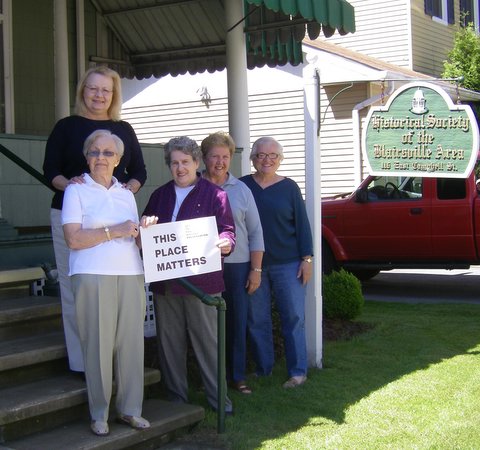About Us

HISTORIC SOCIETY HOME
The Naming of Blairsville: James Campbell and Andrew Brown owned the land on this side of the Conemaugh River opposite the Baird farm. When they heard that the new road was to have a bridge over the river at the site of the Baird farm, the decided that their land would be a good site for a town. Campbell owned the land from the river up to where the railroad tracks are now. He named his new town Blairsville after John Blair of Huntington who was the president of the new turnpike. Brown own the land east of the railroad and called it Brownstown which remained until incorporated into Blairsville in 1890. A large framed document of the bill of sale for the “Lisbon Tract” to James Campbell for 7 pounds “lawful money” on March 1, 1788 hangs in the front hall.
Museum
The house itself was built by Nellie Stitt in 1909. Much of the furnishings were a gift from Robert E. Lintner who was the Treasurer of the Westmoreland Mining Co. His family home was located on N. Walnut St. across from the old Blairsville High School. Robert was the great, great grandson of former Penn. Governor, Simon Snyder, whose portrait hangs in the museum office.
The Office, which also doubles as a gift shop, houses many treasures. The portrait of Simon Snyder’s second wife, Catherine Schuler Snyder and a portrait of her mother, Catherine Schuler Antes are displayed in this room. A landscape painting by Ellen Snyder Lintner, mother of Robert Linter hangs in the office along with an excellent panorama of Blairsville that was made in 1908. The desk on the west wall was a gift of Malcolm Graff. It came from the First National Bank which stood on the corner where Sheetz is now located.Reproduction photos of the Exchange Hotel (1821) built by Samuel McAnulty give a look into the past at the area referred to as the “Diamond.”
The Story Of The Blairsville Bandstand Blairsville’s “Diamond” was carved out of the woods during July and August of 1818, when the original street plan was laid out for the town. It was the hub of activity for the new community. The Bandstand was dedicated on August 13, 1895 and became the structure for highlighting performances by the Blairsville City Band. Over the objections of many of the citizenry, the bandstand was demolished in 1927, in reference to Route 22, which at the time cut through the town as Market Street. Everyone here at H.S.B.A. thanks you for visiting this site. Please visit again!
